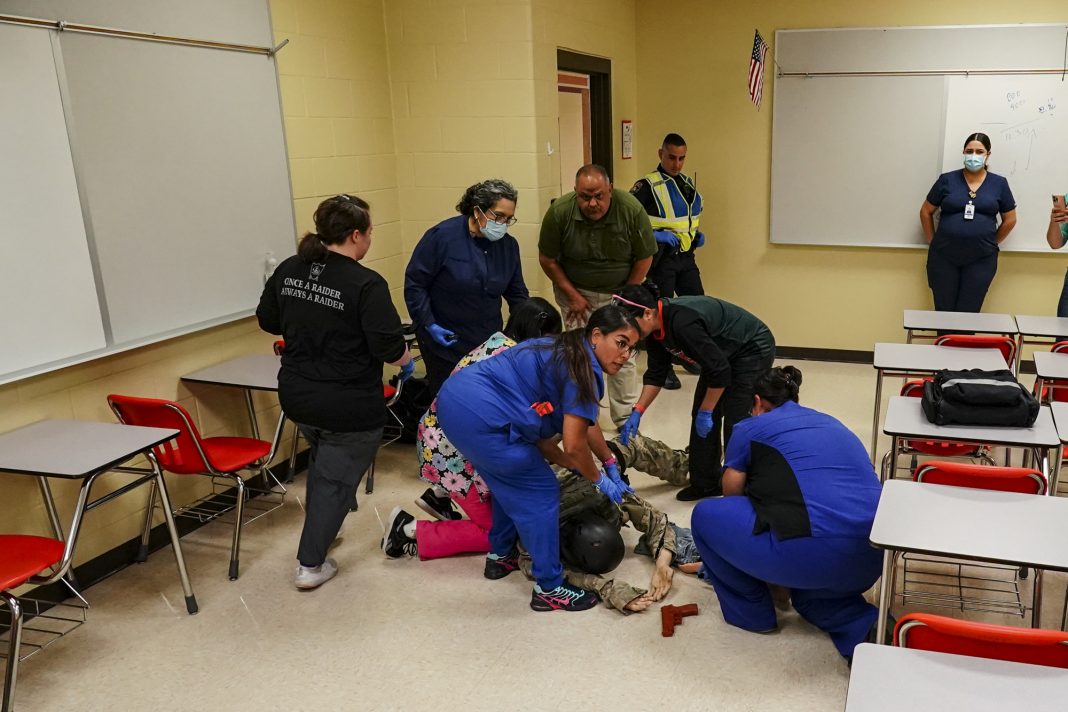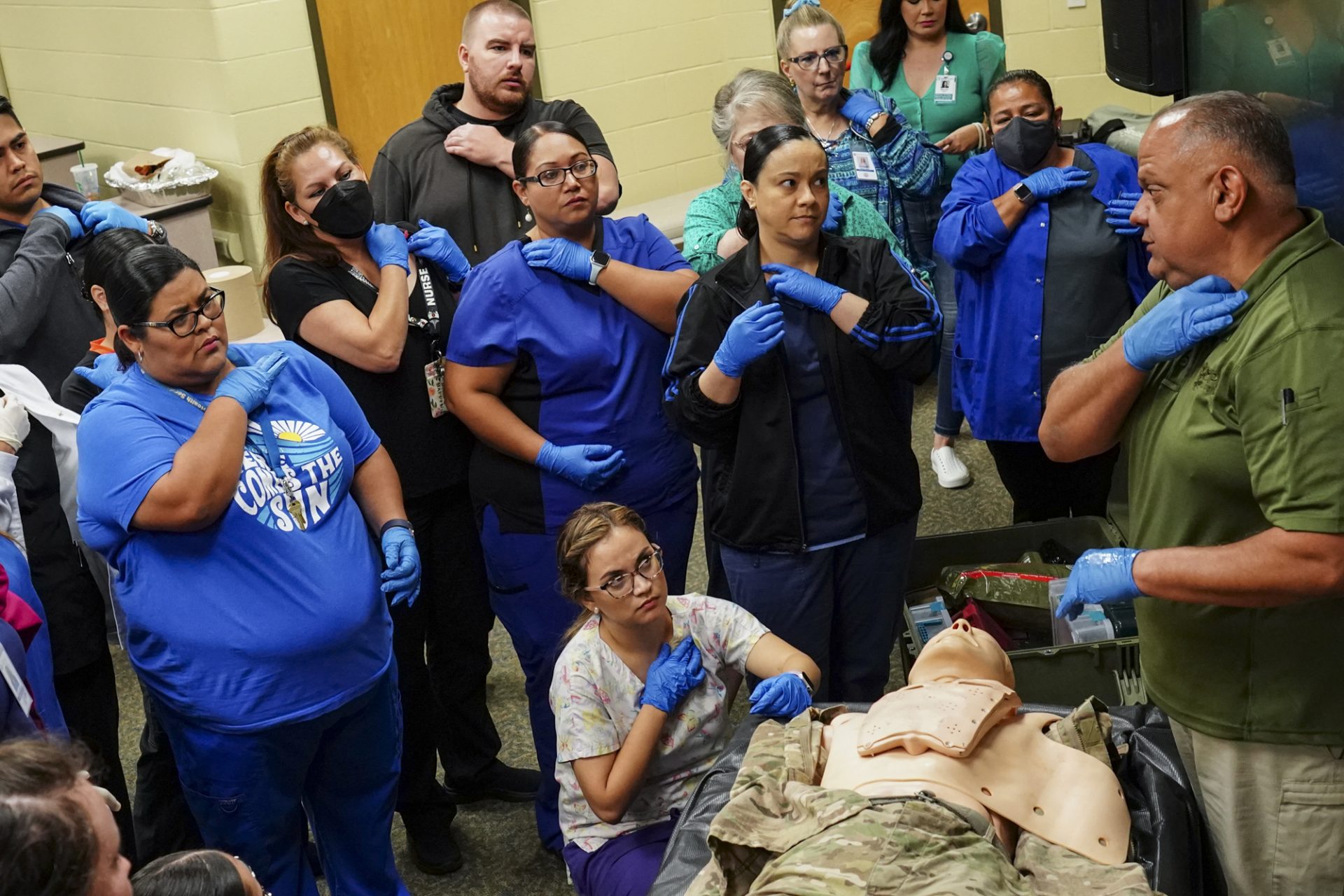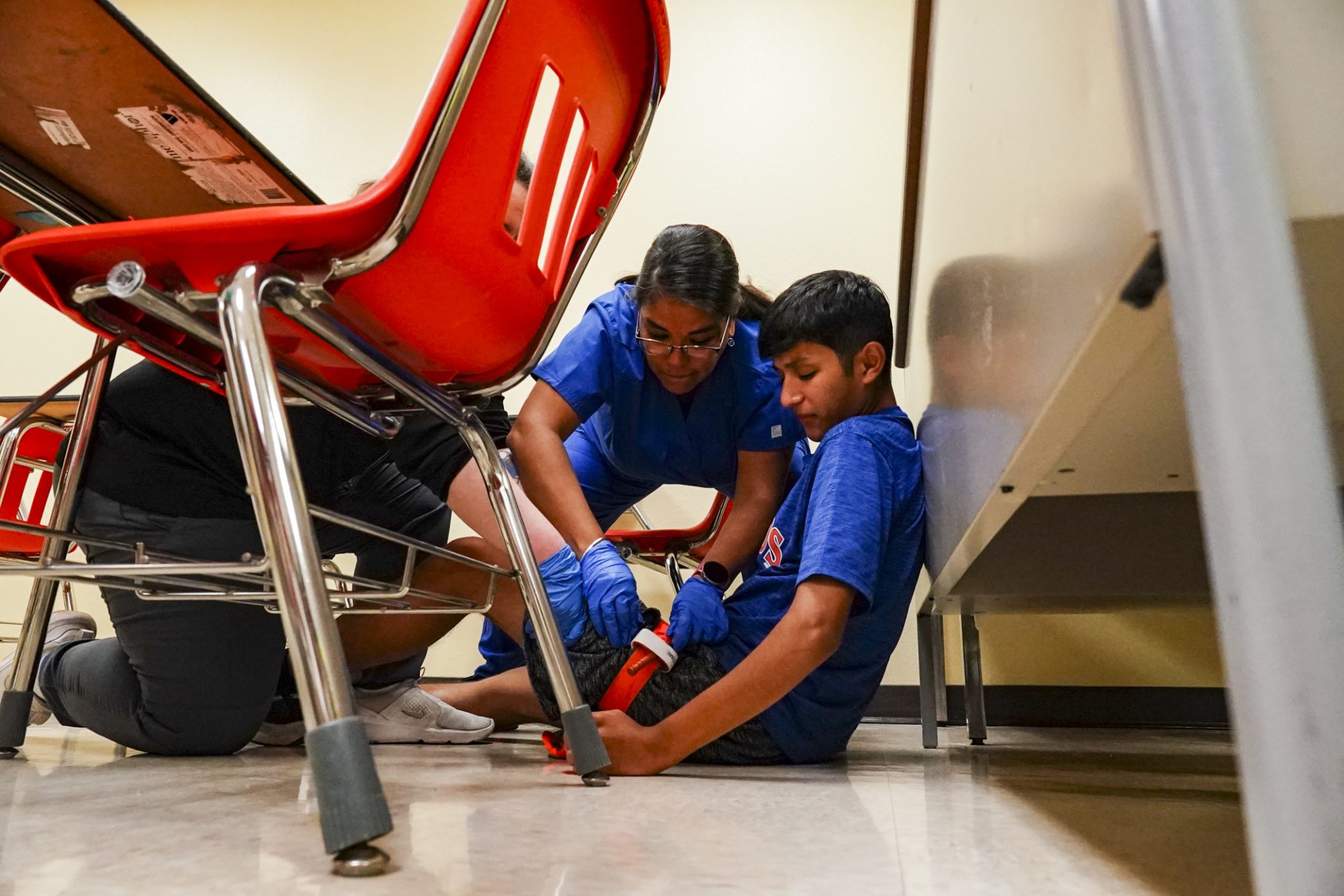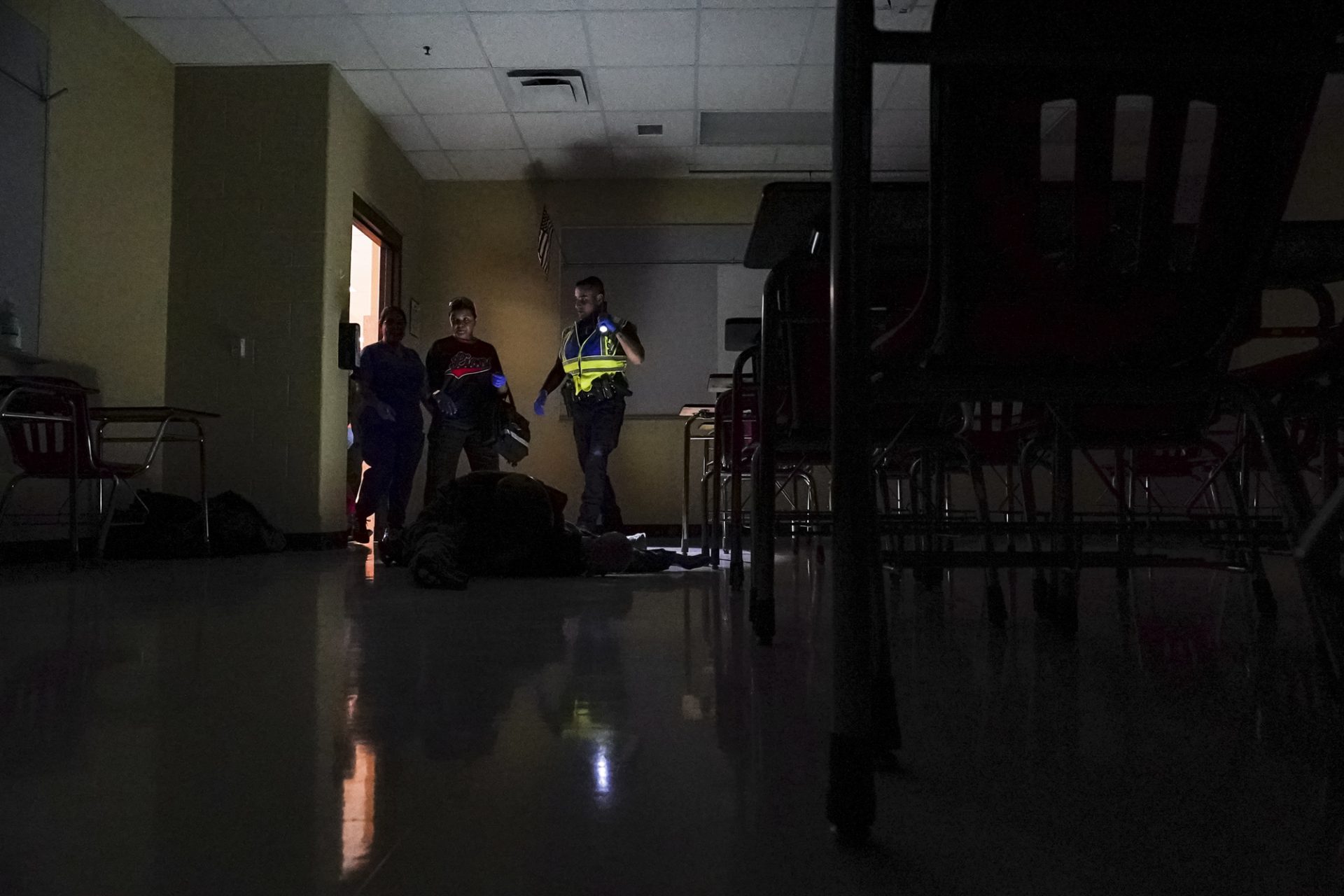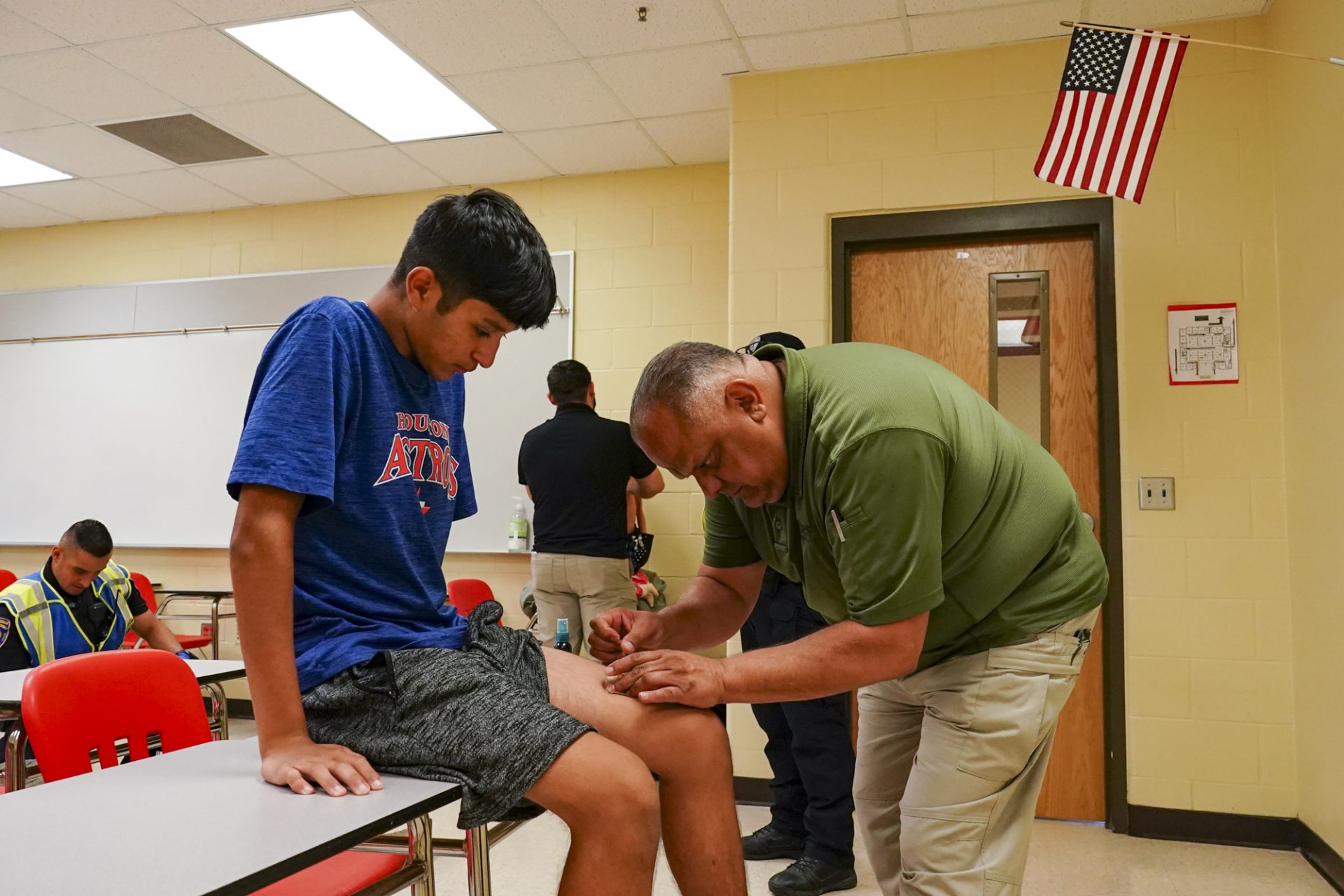Registered nurses across the Brownsville Independent School District are receiving pre-hospital life support training for what to do after after an active shooter has been handled and the immediate threat neutralized.
BISD is the first school district south of San Antonio to offer the training, taught by CPR Plus in partnership with Edinburg-based DHR Health, said Alonso Guerrero, BISD health services director.
Thirty BISD registered nurses received the training Monday and Tuesday at Veterans Memorial Early College High School. Other RNs will do so as scheduling permits, Guerrero said. The premise is that much more needs to be done in the event of an active shooter tragedy than deal with the shooter, specifically, treat the injured.
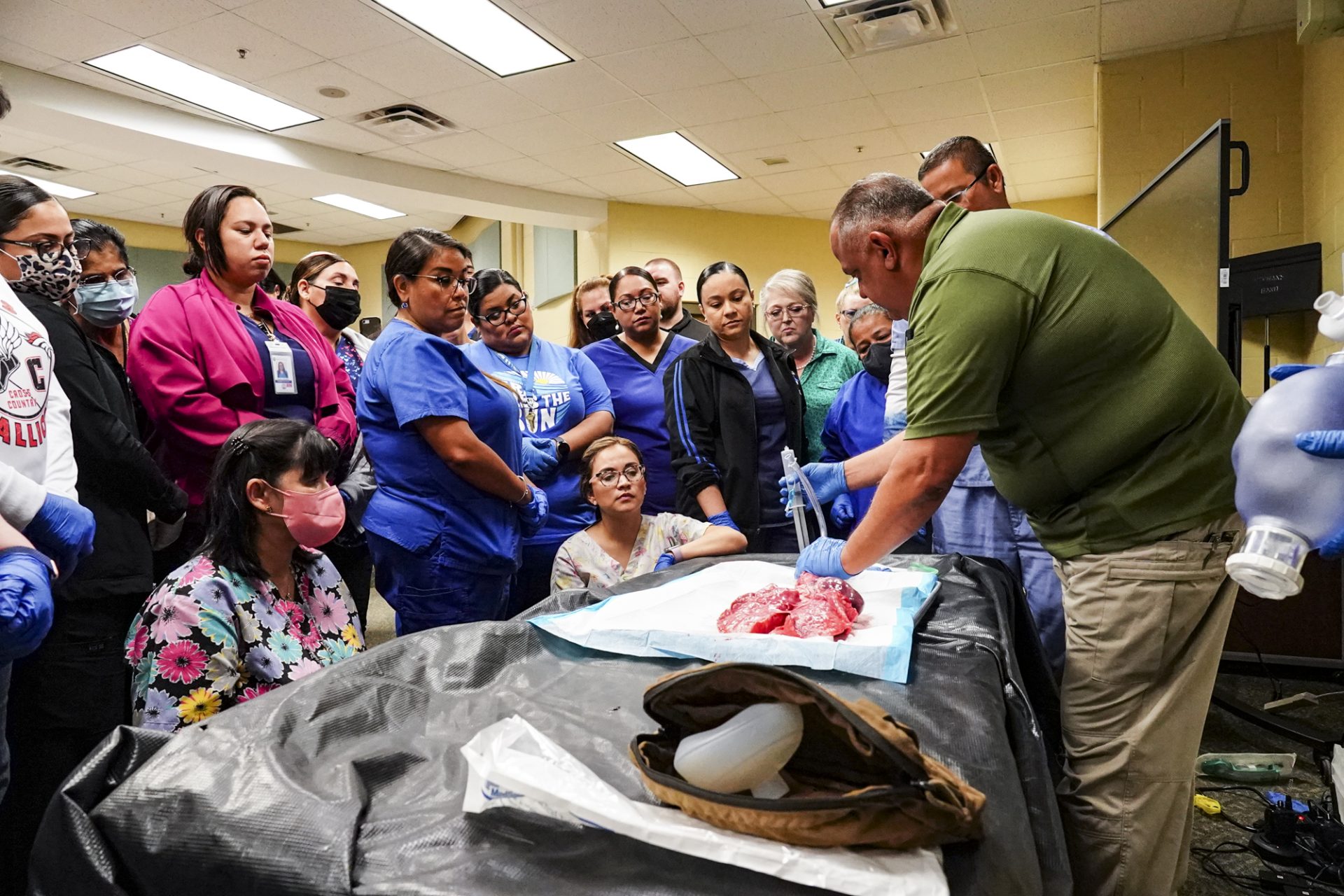
“This is about now saving lives after an active shooter,” Superintendent René Gutiérrez said. “We take care of the active shooter, but now we’ve got to take care of the victims and this is about training our nurses and our staff on how to do the healthcare, how to do the immediate care that you provide after a crisis. Whether it’s an active shooter or it’s any type of injury that may occur at a school, this is to have the training so that we can provide the immediate healthcare that may be needed.”
Daniel Fuentes and Daniel Tuttle of CPR Plus taught the course, which saw its first hands-on training Tuesday after mainly classroom work on Monday.
Fuentes first utilized a crash dummy to demonstrate techniques, including for clearing a victim’s airway. Then he taught using a humanely harvested pig glotis to show how to insert a commonly used device for opening a victim’s airway.
Fuentes then used the pig glotis to gently “intubate our little friend,” manipulating the glotis to inflate the pig’s lungs and perform other operations common at an emergency scene.
“Things like this happen, you have to prepare for it,” he said at one point during the training, advising the nurses to calmly breathe when panic spurred by adrenaline sets in.
“You have two choices, control or chaos,” he said
Triage, the training’s focus and the process medical professionals use to decide who to treat when, is just a fancy French word for sorting, he said.

